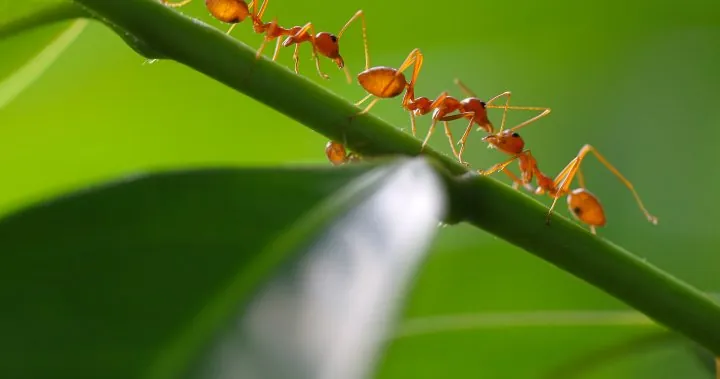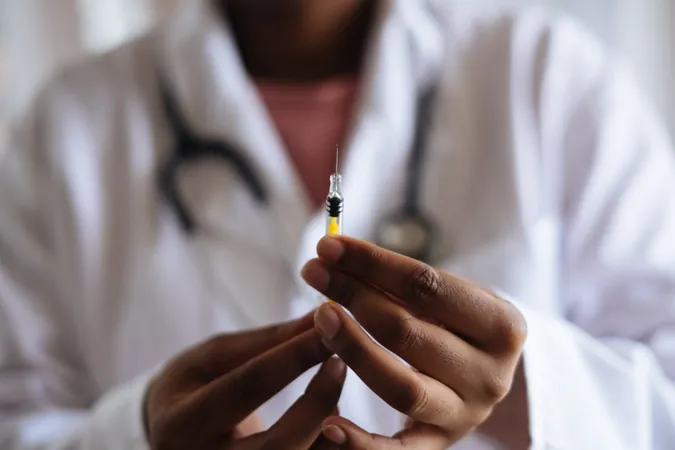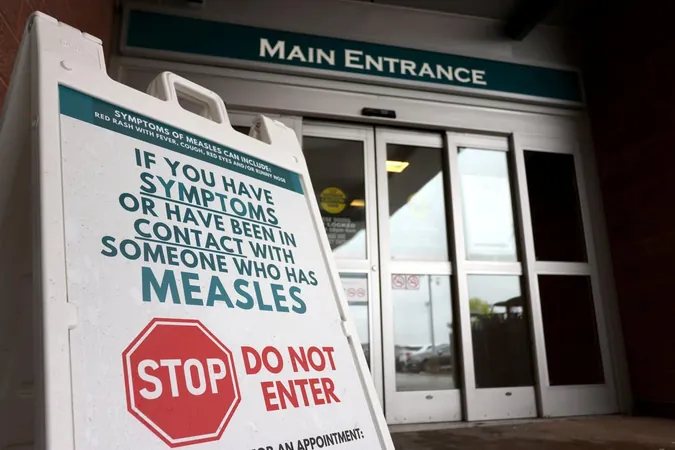
Superbugs on the Rise — Can Ants Provide the Antibiotics We Need?
2024-12-30
Author: William
Introduction
In a surprising turn in the ongoing battle against drug-resistant bacteria, researchers at McMaster University in Hamilton, Canada, are turning to an unexpected ally: ants. These tiny creatures, alongside bees and beetles, may hold the secret to discovering groundbreaking antibiotics that can help combat the alarming rise of antimicrobial resistance, colloquially referred to as "superbugs."
Ants and Their Symbiotic Relationships
Ants, particularly leafcutter ants, have developed an ingenious approach to agriculture by cultivating fungal gardens for their nourishment. This process has led them to form a symbiotic relationship with specific bacteria that secrete powerful antimicrobial chemicals, safeguarding their gardens from diseases.
“Leafcutter ants are fascinating organisms,” explained Cameron Currie, the lead researcher and a professor of biochemistry and biomedical sciences at McMaster University. “They cut leaves and use that material to cultivate fungus, creating a sustainable food source for their young, akin to human agriculture.”
The Threat of Fungal Pathogens
However, like any farmers, these ants face threats, particularly fungal pathogens that imperil their fungal gardens. To fend off these invaders, they rely on bacteria residing within them, which produce antimicrobial substances that crucially keep their crops intact. This mutualistic relationship exemplifies what Currie describes as "a symbiosis" that could inspire novel strategies for tackling antimicrobial resistance in humans.
The Global Challenge of Antimicrobial Resistance
As outlined by the World Health Organization, antimicrobial resistance (AMR) ranks among the top global public health threats. It enables pathogens—bacteria, viruses, fungi, and parasites—to resist the effects of medications we rely on for treating infections. This phenomenon underscores a dire scenario: illnesses like pneumonia and tuberculosis may become increasingly difficult, if not impossible, to treat.
"The pathogens that afflict humans are evolving resistance to the antibiotics we use against them,” Currie noted. “It’s imperative to discover new antibiotics that these pathogens haven’t had the chance to outsmart.”
A Shift Towards Insect-Derived Antibiotics
Traditionally, antibiotics have been derived from soil bacteria, but researchers are now looking towards insects for new antimicrobial agents. The McMaster team has already identified over ten novel antimicrobial compounds from the bacteria in ants, some of which show promise in preclinical testing for treating challenging fungal infections.
Exploring Diverse Ecosystems
The researchers have conducted extensive fieldwork, collecting ants from diverse ecosystems ranging from the rainforests of Costa Rica to the lush landscapes of Brazil. After isolating the bacteria and studying both them and the ants back in their Hamilton lab, they are also exploring other insect species such as bees and beetles for their potential contributions to this vital research.
Student Involvement
Julian Rosati, a second-year biochemistry student involved in this fascinating project, expressed his enthusiasm: "This work has shown me that potential antibiotics might be hiding in plain sight, in places we might not initially consider.”
Targeting Fungal Infections
The team has found significant antimicrobial efficacy against bacterial infections, but Currie noted that the most compelling prospects lie in attacking fungal pathogens. Fungal diseases are becoming a significant concern as fungi share close biological ties with humans, causing a critical shortage of effective antifungal treatments.
He highlighted the emergence of *Candida auris*, a multidrug-resistant fungal infection wreaking havoc worldwide. This infection has proven lethal, especially for individuals with weakened immune systems, and is notorious for its ability to spread swiftly within healthcare environments.
Future Directions
Currie and his research team are optimistic that their new antimicrobial compounds could pave the way for innovative treatment solutions. The next crucial phase involves testing the effectiveness of these agents on human diseases using mouse models.
"We have several molecules derived from ants showing promising results in terms of efficacy and safety in preclinical studies,” Currie emphasized. “This represents a crucial step toward developing effective therapies for humans.”
Conclusion
As the fight against superbugs continues, the collaboration between research scientists and these resilient insects may just be the key to turning the tide on antimicrobial resistance and ensuring a healthier future for all.









 Brasil (PT)
Brasil (PT)
 Canada (EN)
Canada (EN)
 Chile (ES)
Chile (ES)
 Česko (CS)
Česko (CS)
 대한민국 (KO)
대한민국 (KO)
 España (ES)
España (ES)
 France (FR)
France (FR)
 Hong Kong (EN)
Hong Kong (EN)
 Italia (IT)
Italia (IT)
 日本 (JA)
日本 (JA)
 Magyarország (HU)
Magyarország (HU)
 Norge (NO)
Norge (NO)
 Polska (PL)
Polska (PL)
 Schweiz (DE)
Schweiz (DE)
 Singapore (EN)
Singapore (EN)
 Sverige (SV)
Sverige (SV)
 Suomi (FI)
Suomi (FI)
 Türkiye (TR)
Türkiye (TR)
 الإمارات العربية المتحدة (AR)
الإمارات العربية المتحدة (AR)